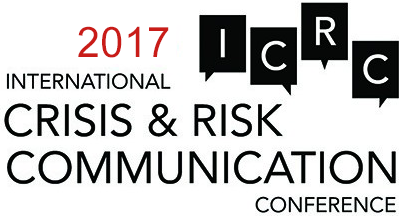
Graduate Student
University of Hawaii at Manoa
United States
Daniel Abt is currently pursuing his Master of Arts degree in Communication at the University of Hawaii at Manoa. He specializes in Organizational Communication as well as Information and Communication Technologies with a research focus on public relations, strategic and crisis communication, social media and policies. By attending his first conference, he presents his research on the interplay of organizational non-mediated point-of-crisis communication and online social media crisis reactions based on findings from a case study in the airline industry. Previous internship experience at the Fraport AG, the managing company of Frankfurt Airport, substantiated his interest in public relations in the aviation business. Daniel received his Bachelor of Arts degree from the AKAD University of Applied Sciences in Stuttgart, Germany where he studied International Business Communication with a specialization in marketing.
2014
Breakout Session: The Effect of Organizational Non-Mediated Point-of-Crisis Communication on Online Social Media Crisis Response Reactions – A Case Study of the American Airlines
Incident of April 2013*
On April 16, 2013, a nationwide system outage forced American Airlines to ground all of its flights for several hours, which led to numerous cancellations and delays, leaving thousands of passengers stranded (Mouwad, 2013). Seven update posts by American Airlines on its official Facebook profile page yielded a total of 1219 user comments and mixed reactions.
Early examinations found that users frequently referred to the airline’s deficient offline communication during the crisis events, which indicated a significant and specific interplay of organizational non-mediated point-of-crisis communication and publics’ secondary crisis communication online as defined by Utz et al. (2013). The nature of social media as an uncontrolled communication medium (Broom & Sha, 2013) can pose a threat to an organization’s reputation when user-generated-content reflects badly on an organization (Tucker & Melewar, 2005), especially since negative word-of-mouth can impact individuals’ future purchase behavior and influence future support of an organization (Coombs & Holladay, 2007).
A content analysis with a directed approach (Hsieh & Shannon, 2005) of all user comments to American Airlines’ update posts has been conducted to further examine the interplay of non-mediated offline communication at the crisis location, in this case airports, airplanes, and telephone lines, and secondary crisis communication online. The findings initially support previous research promoting the importance of crisis information form and source on publics’ perception and crisis response reactions (Jin et al. 2011; Liu et al., 2011).
Further, the findings substantiate early indications as it was found that perceived poor non-mediated communication at the point-of-crisis resulted in significant negative secondary crisis communication online. The findings highlight offline non-mediated point-of-crisis communication as an important crisis communication form and source with significant implications on publics’ secondary crisis communication. The high frequency of negative comments indicates poor offline non-mediated communication by the American Airlines staff at airports, in planes and on telephone lines. The point-of-crisis audience, comprised by crisis victims being at the same time the immediate affected audience, physically present at the crisis location, expressed their displeasure on Facebook.
Motivated by anger and enabled by the affordances of social media and new media technologies (boyd, 2011), the audience carried negative word-of-mouth away from the physical space of the immediate crisis location to a potential greater audience by creating negative secondary crisis communication online.
The findings indicate that the amplification of negative word-of-mouth and thus the potential threat to American Airlines’ reputation could have been avoided, had their staff communicated effectively with the right messages for the immediate affected audience at the point-of-crisis.
This study contributes to crisis communication research by describing the interplay of organizational non-mediated point-of-crisis communication and secondary crisis communication online. It highlighted the importance of the human element by explaining the potential implications for an organization’s reputation due to poor non-mediated point-of-crisis communication.
*Daniel Abt and Wayne Buente co-authored this paper. Daniel Abt will be presenting.


